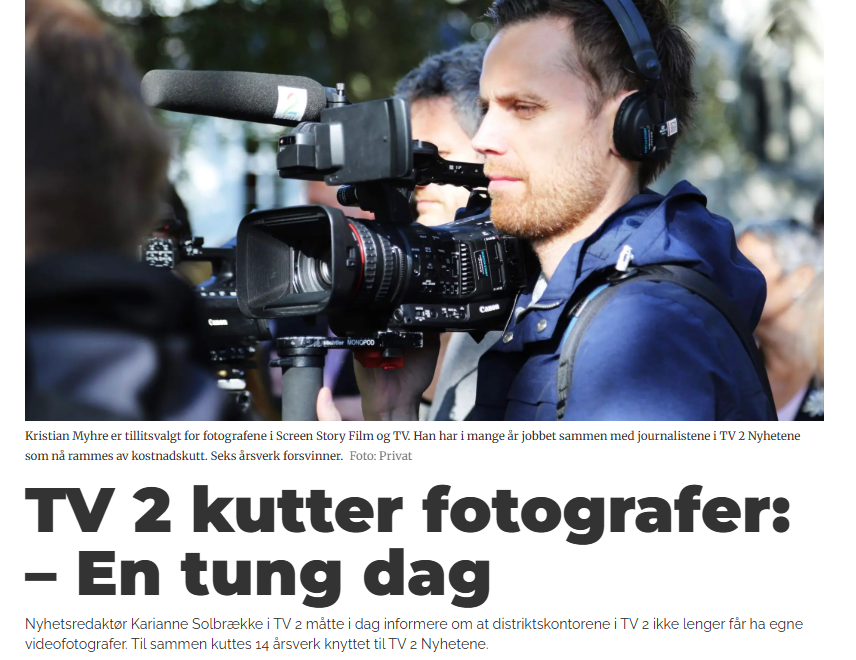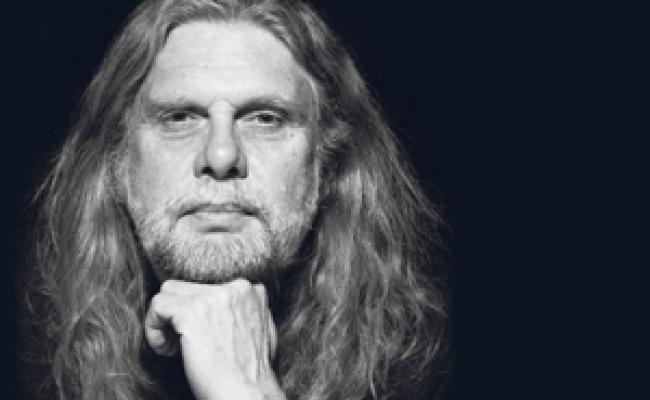Arne O. Holm says Who Will Tell the Story of Us in the North?

The TV journalists at TV2 in Northern Norway will have to do without photographers in the future. (Screenshot from Medier 24).
Comment: When Donald Trump was first elected the US president in 2016, it came as a shock to American commentators and journalists. From their fortresses in Washington and New York, they had lost touch with the voters in the rest of the US.
This is a comment written by a member of the editorial staff. The views expressed are the writer's own.
The national editorial offices were too late in understanding that there was a political revolution underway. In a hurry, they sent their TV teams and newsrooms out into the country to find Trump's supporters.
Most set sail for the so-called rust belt, former industrial areas once at the center of economic development, but now heading toward poverty.
The mental map
They were all on the hunt for stories to explain Trump's popularity. In some comment, I have described this as parachute journalism.
Equipped with cameras and notepads and a more or less pre-written manuscript, they turned up in poor neighborhoods and disappeared just as quickly.
Prejudiced as many of them were, they could hardly find an explanation. They had made up their minds in advance, before going on a quick visit, like doctors on their way from one heart patient to the next.
As if heading from one patient to the next.
The terrain did not coincide with the mental map they had put together. Yet, instead of correcting the map, they held on to their assumptions.
The rest is history. Donald Trump was elected president, and the newsrooms were gobsmacked.
Perhaps American journalists learned from this.
Foreign reporters covering the US, however, have learned less. Equipped with a selfie stick, they stand formally outside the White House, or at least in front of a photo of it, telling the American history as they've read it.
Of course, this is not the whole truth about Norwegian foreign journalism. Behind every generalization, there is an undergrowth of exceptions.
Filming themselves from weird angles and in poor light.
But that is not the point. The point is that when the proximity to the sources, the stories, the people, the terrain, is lost, journalism loses its validity.
Systematic reduction
Few Norwegian media outlets have foreign correspondents.
It might be worse that they are also systematically reducing their editorial coverage of what is happening within the country's borders.
Most recently, TV2, Norway's one of two national TV companies, has cut photographers from its payroll.
Two reporters, one in Tromsø and one in Bodø, will now have to get out their selfie stick and film themselves from weird angles in poor light, while covering an area comprising almost "half" of Norway.
The North of Norway has been systematically downgraded by national media outlets for a long time. NRK is still keeping up, perhaps because they have been assigned the task.
But in the places where the editorial offices can prioritize, they rarely prioritize presence in the North.
Paradoxically, or rather illustratively, this happens at the same time as the Armed Forces is rearming the North and shifting governments continue to insist that Northern Norway is not just important, it is the most important strategic area in the country.
A fragile thing
No one can force Norwegian editorial offices to take the developments in the North seriously. We are also not even close to the type of US polarization that brought Trump to the presidential chair.
But trust is a fragile thing, and the day we Northerners do not recognize the stories told about us, stories told by journalists that fly in and out, journalism loses its legitimacy, instead of being the societal glue it is meant to be.
We are already seeing signs of this. While newrooms move out of the region, more and more communications advisors move northward. Well, moving is an overstatement. They prefer to commute with their alleged expertise.
Expertise in communication techniques, not in societal matters. The health sector is just one of many examples of industries that hide behind a wall of communications advisors.
Leaving the storytelling of the North to communications advisors who are supposed to look after the interests of their companies does not strengthen democracy.
Closing their eyes to the region
To be fair, good work is taking place in the region's local newspapers.
But it is mostly we in the North who read those.
The national agenda is set by the national media.
Also by TV2, which, in its pompous description of itself, insists that the channel "lives to be close".
In the future, if the leadership has its way, two employees, equipped with a selfie stick each, will cover a combined area of 113,000 square kilometers.
That gives the term “close” a whole new meaning. Perhaps “close their eyes to” would have been a more accurate description.



